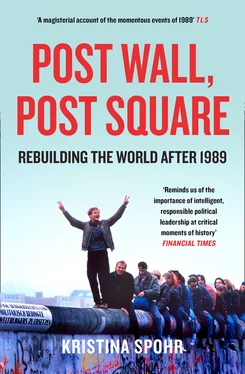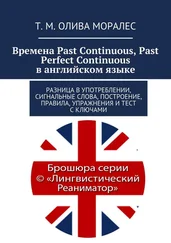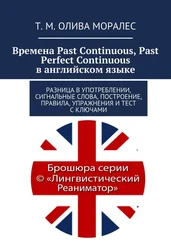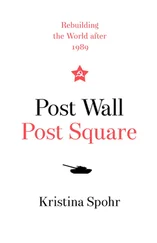Bonn was desperate to negotiate a deal to release these GDR squatters to the West, and the UN General Assembly on 27–9 September in New York offered Genscher the perfect opportunity. On the margins of the conference he was able to discuss the matter quietly with his Soviet, Czechoslovak and East German counterparts.[149] As a result of Genscher’s pleas, it appears, Shevardnadze pressed East Berlin to ‘do something’ and Honecker, with approval of the Politburo on the 29th, offered Bonn a one-off deal: the embassy-occupiers’ could go West as long as their ‘exit’ to the FRG would be presented as their ‘expulsion’ from East Germany. Honecker would thereby be able to demonstrate that he remained in control by seeming to oust these traitors from his state. To further show that he was orchestrating the whole business, the East German leader insisted that the refugees travel on sealed trains from Prague back to the GDR before being transported to West Germany. Honecker wanted to use the train journey to record the identities of the escapees, so that GDR authorities could confiscate their property. Sealed trains had, of course, a dark historical connotation, summoning up images of Nazi Germany’s transports to the concentration camps. There were also fears that the trains could be stopped in the GDR. Still, the Kohl government agreed to Honecker’s offer because this was at least an arrangement under which the East German escapees were being treated as legal emigrants rather than illegal fugitives – part of the general effort to bring the crisis within the domain of international law and universal humanitarian values.[150]
As soon as Genscher got back to Bonn from New York at dawn on 30 September, he found himself on a mission to implement the plan. With a small team of officials he headed for Prague. Other FRG diplomats set out on a similar mission to Warsaw. Both groups had the daunting task of overseeing an orderly exodus and ensuring that the GDR honoured its grudging concessions. Genscher landed in the Czechoslovak capital in the afternoon, only to learn that – contrary to earlier understandings – he would not be allowed to accompany the refugees on their freedom train. Honecker had now decided that only lower-level West German officials could travel: he did not want the added publicity from the foreign minister’s presence with the freedom riders.[151]
Undeterred, Genscher hurried to the West German embassy. There, an air of excitement had been building up over the course of the day. Suddenly, just after dusk and without any fanfare, Genscher stepped onto the baroque balcony and looked out at the huge crowd beneath him. Visibly moved, he announced ‘Dear fellow Germans, we have come to you to inform you that today your departure to West Germany has been approved.’ That magic word ‘departure’ was enough: the rest of his sentence was drowned in cries of jubilation.[152]
‘It was unbelievable,’ exclaimed a man from Leipzig. ‘Genscher was there like the incarnation of freedom.’ The people at the Prague embassy, some of whom had been there for eleven weeks, began hastily packing. It’s ‘like Christmas and Easter in one shot’, a young man told a journalist before he hurriedly boarded a bus to the train station with his wife and infant child in tow.[153]
For Hans-Dietrich Genscher, this was a hugely emotional moment. The fate of Germans in the GDR was a gut issue for him, in a way it could never have been for Kohl, a man from the Franco-German borderlands of the Rhineland-Palatinate, because Genscher had once literally been an East German refugee himself – he had fled to West Germany in 1952. Genscher had never lost his distinctive Saxon accent. Having started his legal studies in the GDR, he completed them in Hamburg before moving into West German politics.[154] These personal roots explain Genscher’s profound commitment to German unification and also his belief that this should be done through legal agreements as a peaceful embrace of the Soviet bloc. Hence his passion for West Germany’s Ostpolitik, and for the principles outlined in the Conference on Security and Cooperation in Europe, which were enshrined in the Helsinki Final Act of 1975, affirming both the borders of Cold War Europe and also the shared values of universal human rights. His grand ambition was to transcend the Cold War and German division not by unilateral Western actions but by consensual pan-European solutions. Therefore it was an added bonus that he was the one who commanded the show at the Prague embassy, not his ally-rival Chancellor Kohl. Little wonder that Genscher a few days later described that moment on the balcony as ‘the most moving hour in my political career’. The wheel was coming full circle for him, as he encountered the escapees of a younger generation who wanted to take the same path. ‘You can see what people will go through so that they can live like we do,’ he added, ‘not in the material sense, but to have the right to decide for themselves what to do with their lives.’[155]
And so on that night of 30 September, Prague police rerouted normal traffic to allow more than a dozen buses to evacuate the West German embassy. At Prague-Liben train station, just out of town, the throng of exuberant East Germans waiting for their trains grew ever larger. Applause rippled through the crowd at the arrival of West Germany’s ambassador to Czecholsovakia, Hermann Huber. Faces glowed with excitement, they pressed close, hugging and kissing him, even handing their children for a kind of benediction. A knot of Czechoslovak police officers stood at a distance, observing but not interfering. After many delays, six trains finally rolled out of Prague, in the company of a few token West German officials, who hoped to keep people calm.[156]
The trains had to travel for seven hours along the circuitous route from Prague through Schönau, Reichenbach, Dresden, Karl-Marx-Stadt (Chemnitz), Plauen, Zwickau and Gutenfürst. The tensest moments occurred inside the GDR when East German security officials got on the trains. No one could be sure that they wouldn’t try to force the passengers to disembark and end their journey to freedom. But nothing worse happened than recording the names of those leaving and collecting their official identity cards. These moments passed without incident. The train stopped in Dresden and Karl-Marx-Stadt, where more émigrés managed to clamber aboard – without impediment or punishment. Other East Germans gathered along the track to wave as the special trains of the Deutsche Bahn sped past.[157]
When the trains reached FRG territory at Hof in north-eastern Bavaria, hundreds of West Germans packed the station, cheering and waving as each train pulled in. They had stacked up mounds of used clothing, shoes, toys and prams for the newcomers. Some pressed cash into the hands of exhausted parents or gave their children candy bars. For others, it was all too much: they stood silent, weighed down by emotions they could not put into words. In the minds of many older bystanders in this border town, the scene evoked memories of the time they – like Genscher – had gathered up their few belongings after the war to begin new lives in the West.
Although not allowed to participate in the exodus itself, Genscher sensed history in the making and relished his personal role in it. That moment on the embassy balcony in Prague had got him into the limelight of the unfolding unification drama ahead of Kohl, who also coveted a place in history. ‘What has happened shows that we are in a historical period of change which cannot be reversed and will continue,’ Genscher told the press. ‘I hope that the East German leadership realises this and will not isolate itself by refusing to change. Gorbachev is coming and I hope he will convince East Germany that reform lies in its best interests, that reform means more, not less stability.’[158]
Читать дальше












